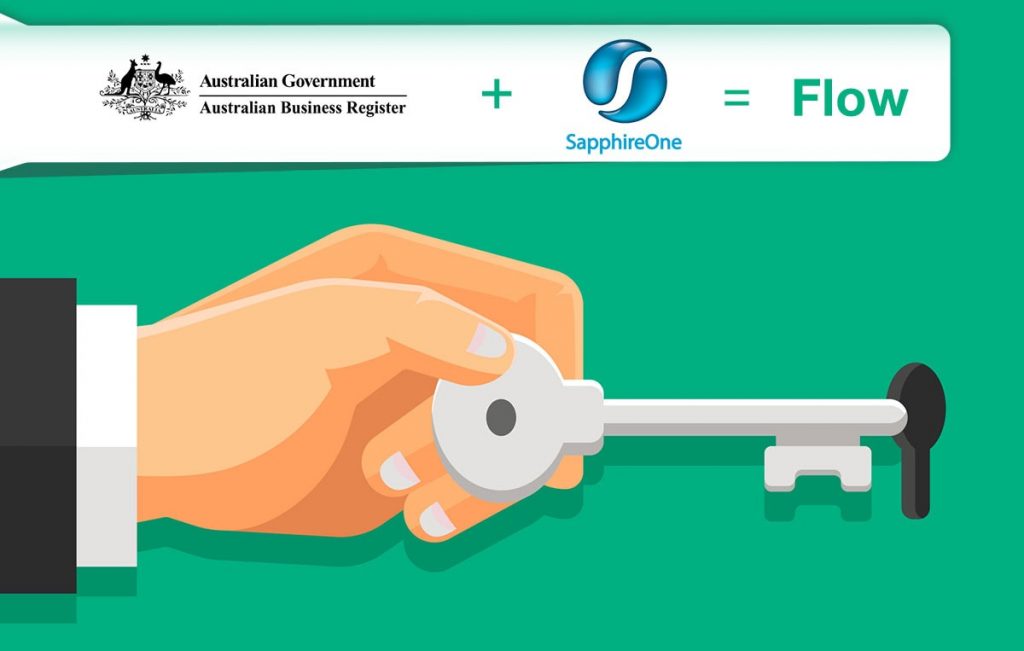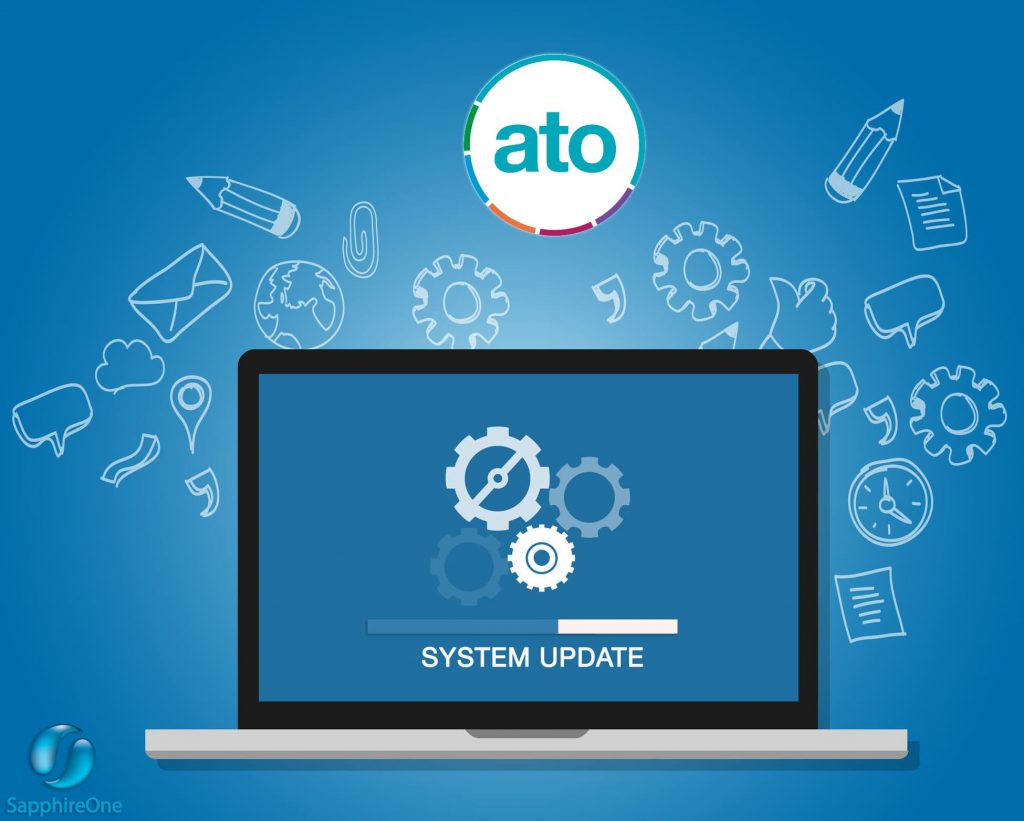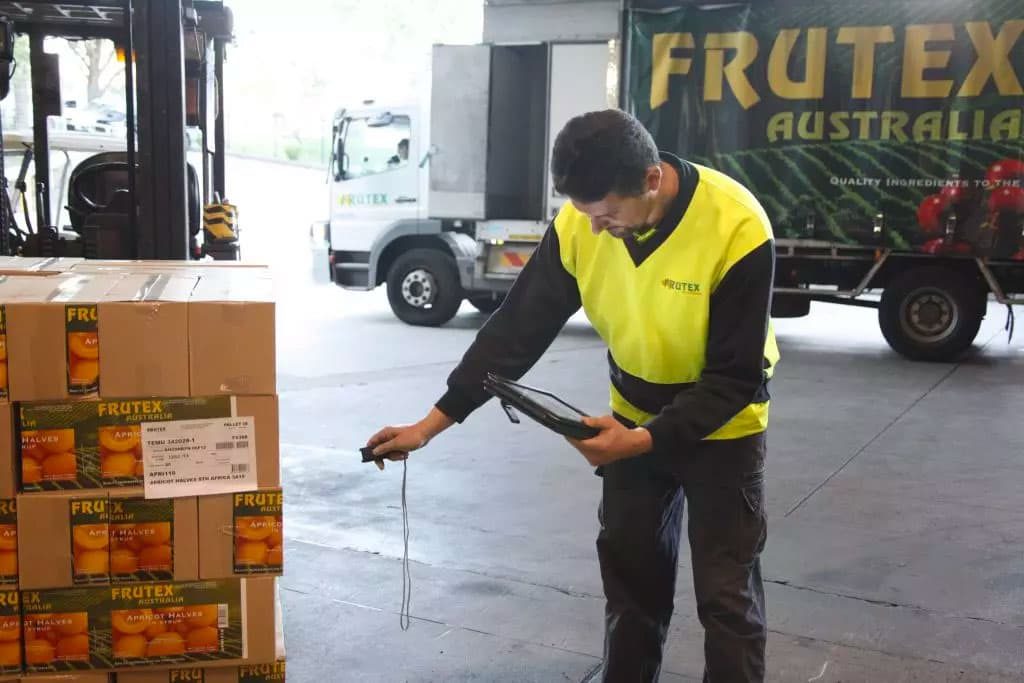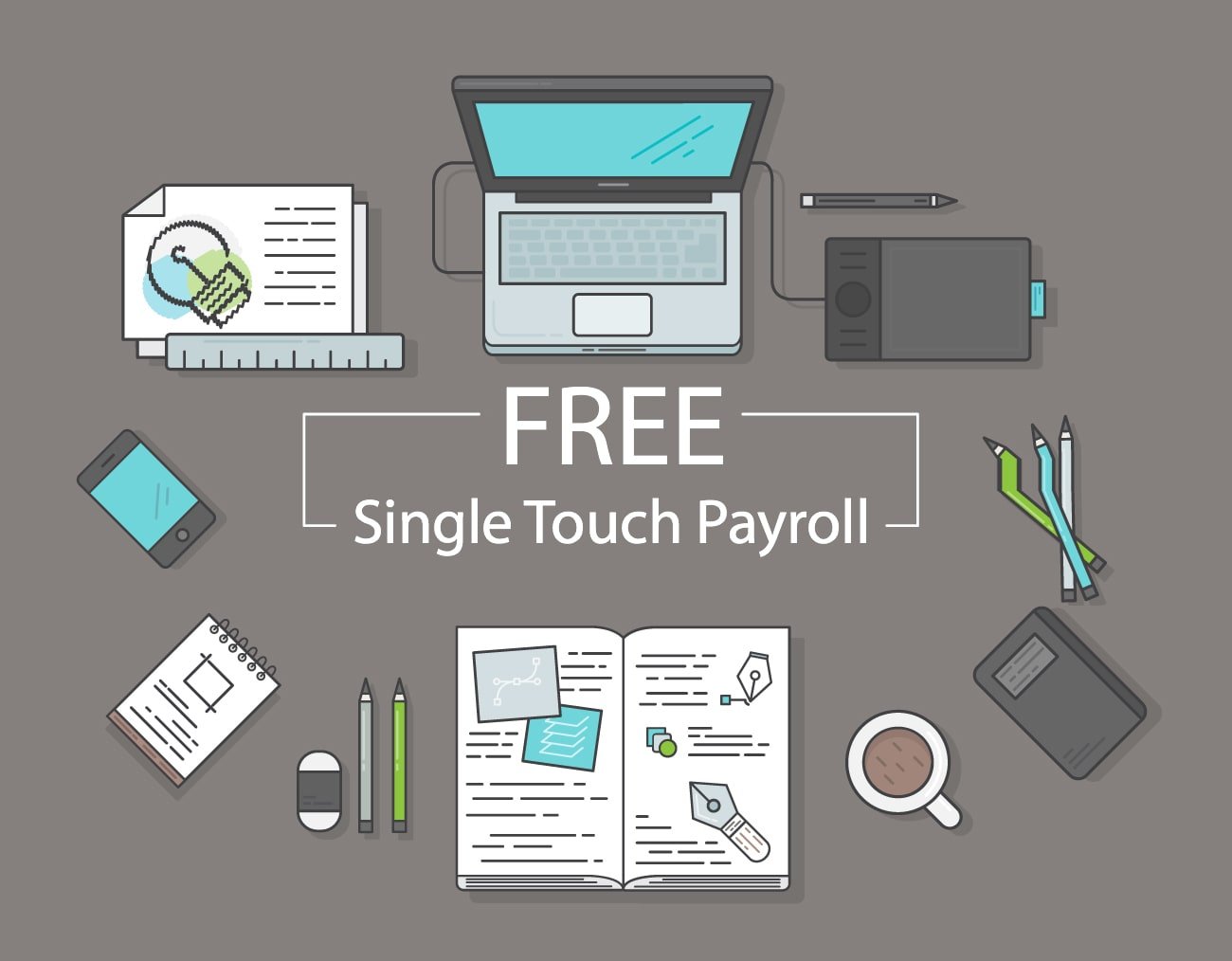ATO + SapphireOne = Relationship Authorisation Manager (RAM) to manage your company authorisations.
January 15, 2020 3:30 pm | by John Adams

Your AUSkey will retire in March 2020 and will be replaced with myGovID.
At the end of March 2020 your AUSkey will no longer be valid and will be replaced with your myGovID. Your myGovID can be managed using the ATO’s Relationship Authorisation Manager (RAM) – This will allow you to link your myGovID to your ABN and manage who can act on behalf of your business online.
You can already use myGovID and RAM for some participating government online services. This will extend to more government online services that use AUSkey or Manage ABN Connections.
Before you can submit a Single Touch Payroll event (STP) or submit a Business Activity Statement (BAS) through Standard Business Reporting (SBR), your AUSkey will need to be replaced by new machine credentials which are a component of the Machine to Machine (M2M) authentication solution.
Please click on the link below which explains how to create the machine credentials in the ATO Relationship Authorisation Manager which includes the steps you need to complete and details on installing the browser extension. There are several links to videos which will guide you through the process.
https://info.authorisationmanager.gov.au/business-software-user-or-provider
Machine credentials
The machine credential is installed on your computer and facilitates you to interact with the ATO online services through SapphireOne.
The
Machine credentials are created in the Relationship Authorisation Manager (RAM)
and replaces the AUSkey.
You will need to download and install the application plugin (Machine
credential download/browser extension) compatible with your computer’s
operating system:
Please note: Apple Safari, Windows Explorer, Microsoft Edge will not work with this plugin.
SapphireOne requirements are 17.2.1 or greater.
Please visit the Australian Taxation Office website for more details: https://info.authorisationmanager.gov.au
ATO system upgrades over Christmas & New Year time | STP and SBR will be unavailable
December 18, 2019 10:38 am | by John Adams

From midday AEDT on Tuesday 24 December 2019 ATO systems will progressively become unavailable until 6.00am AEDT on Thursday 2 January 2020 while ATO complete major system upgrades. This means during Christmas and New Year period starting from 24 December 2019 to 2 January 2020 ATO online services will be unavailable.
List of ATO online systems:
- ato.gov.au
- ATO app (some features)
- ATO Online services for Agents
- ATO Online services for Individuals and Sole Traders
- ATO Online services for non-residents
- ATO Online services simulator
- AUSid
- Australian Business Register
- Business Portal
- Bulk Data Exchange
- Data Transfer Facility
- Departing Australia Superannuation Payment
- EmployerTick
- Progress of Return
- Practitioner lodgement service
- Single Touch Payroll
- Small Business Superannuation Clearing House
- Standard Business Reporting
- Statement of tax record
- SuperTick
Access to STP, SBR and Payment will be limited
All SBR inbound services for the Practitioner Lodgment Service (PLS) enabled services will be offline during the closedown period. Single Touch Payroll (STP) will operate in a capture and store mode only. To support member rollovers, the SuperTICK service in single request processor (SRP) will remain operational across the full shutdown period. If you plan on working during Christmas & New Year time, your system access will be limited. You will be able to report using STP, but these records will not be processed or visible until ATO systems are available in the new year. You will not be able to lodge returns, activity statements and forms during this time. Payments via BPAY, EFT or Australia Post. will not be visible until the ATO systems are available.
SapphireOne advises that you process your payroll before 23rd December 2019 in order to avoid any kind of inconvenience.
Our office will close at 5pm on Monday 23 December 2019 and will re-open on Monday 6 January 2020 at 8.30am.

Merry Christmas and Happy New Year
10 Stocktaking Procedures to make your EOFY Obligations Stress-Free
June 28, 2019 12:50 pm | by John Adams

Its’ that time of the year again with the Australian Taxation Office requiring businesses that buy or sell stock to conduct a stocktake. This involves reconciling your physical stock with what’s listed in your inventory records. This can be a mammoth task but helps you make informed decisions, identify issues in stock management and processes. The right stocktaking procedures are the building blocks to a successful one.
How to make your stocktaking procedure as pain-free as possible?
1. Prepare and then prepare some more
Roster on extra staff to ensure the process is more efficient and runs smoothly. Make sure you have sufficient supplies such as barcode scanners, pens, clipboards, calculators, mobile devices, coffee, tea and water. Print out extra stock lists and train staff on how you would like them to count. Ask them to dress comfortably, take regular breaks and provide food.
2. Pick a time outside of normal operating hours
Ideally this is as close to the end of the financial year as practical. If possible a non-business day, before or after hours otherwise it’s best to close down. This stops your inventory levels changing during the stocktake.
3. Identify what stock is to be counted and where it’s located
Tidy up your storerooms, warehouses, stores and label the inventory. Create a stock list outlining which location the stock is held, where in the location, and what there is to be counted. Group similar inventory items together.
4. Define how you’re counting it
Let your staff know which sections they’ll be counting and in what order. Have a clear system for how they should physically count your stock. It’s a good idea to have a group of 2 for each unit of stocker takers. One person to count the inventory and call out the amount, the second person to record this number and double check the first.
5. Count everything
Every inventory item needs to be physically counted. Do not assume the current stocktake is correct. This should be treated as a comprehensive, full stocktake to know exactly what inventory is on hand. Check boxes and items are labelled correctly, their condition, and other storage areas for random items. Don’t forget to incorporate and count for returns, laybys and items on reserve.
6. Update your stock records
After the stocktake, be prepared for stage two. Your physical count needs to be checked against your inventory and accounting records. If you encounter discrepancies take immediate action to find out why. Any discrepancies found will need to be rechecked. All stock lists need to be completed and gathered so your data entry staff can enter into your accounting system. Make sure once the stock lists are entered, they are marked clearly so no duplications occur.
7. Formulate a plan for slow-selling items, thief and spoilage
Think about reducing inventory, analyse slow-selling items and create a plan for optimising the amount of inventory stored in your warehouse. Brainstorm ideas with the data collected to increase security and reporting procedures for damaged and spoiled stock.
8. Use technology available to streamline the process
If you are not using barcode scanners it may be time to think about investing in them. The scanned data can be imported wirelessly and directly into your ERP system. Investing in an ERP system will minimise errors and increase speed by real-time updates of the stock as they are counted. Stock items can be found in particular locations on mobile devices through inventory management in the software. An ERP system eliminates the need of data entry staff and manual record taking.
9. Review procedures
When completed, review your stocktaking procedures and note any suggestions to further streamline actions and improve processes for the next count.
10. Think about scheduling more than once a year
To keep on top of inventory it is easier to schedule multiple stocktakes throughout the year. These can be smaller, partial stocktakes so they don’t disrupt business. Think about dividing by stock items, brands and locations so you have inventory control all year-round, not just once a year.
Click for more information regarding the latest release of SapphireOne ERP, CRM, DMS and Business Accounting Software Application. Alternatively, contact our office on (02) 8362 4500 or request a demo.
Lodge your Tax Return effortlessly and spend time on your big idea
July 13, 2018 10:38 am | by John Adams

At the end of financial year whether you are in Australia, New Zealand or anywhere in the world, all companies have tax obligations. The requirement to produce your Profit & Loss and Balance Sheet at the end of the financial year is mandatory for all businesses and organisations.
A financial year (or fiscal year, or sometimes budget year) is the period used by governments and their tax agencies for accounting and budget purposes, which vary between countries. It is also used for financial reporting by business and other organizations. Laws in many tax jurisdictions/countries require company financial reports to be prepared and published on an annual basis, but generally do not require the reporting period to align with the calendar year. The End of Financial Year (EOFY) is the date that marks the end of the financial year.
The calendar year is used as the financial year by about two thirds of publicly traded companies in the United States and for a majority of large corporations in the UK and elsewhere, with notable exceptions being in Australia, New Zealand and Japan. In Australia the End of Financial year generally falls on June 30th, New Zealand ends their financial year on March 31st. Some organisations and companies follow the USA end their financial year which is often on the same day of the week each year, for example, the Friday closest to 31 December. Under such a system, some fiscal years will have 52 weeks and others 53 weeks.
Taxation laws generally require accounting records to be maintained and taxes calculated annually, which usually corresponds to the financial year used by the government. The calculation of tax on an annual basis is especially relevant for direct taxation, such as company income tax. Many annual government fees and levies—such as Council rates, licence fees, etc. are also calculated on a financial year basis, while others are charged on an anniversary basis.
Many educational institutions have a financial year which ends during the summer to align with the academic year (and, in some cases involving public universities, with the state government’s financial year), and because the university is normally less busy during the summer months. In the northern hemisphere this is July to the next June. In the southern hemisphere this is calendar year, January to December. Some media/communication-based organisations use a broadcast calendar as the basis for their fiscal year.
Whatever the size of your business and tax obligations, you must report and pay any amount due to the ATO, this includes Superannuation and GST, VAT or Sales Tax reporting. It is essential to lodge tax return accurately in order to achieve the maximum business offset and possibly even receive a tax refund.
By managing everything from Financial Reporting, Inventory Control, Assets, Job Projects, Payroll/HR to Bank Reconciliations, SapphireOne ERP CRM DMS can give you more time to do the things that matter, such as developing new strategies and thinking in your business or organisation.
SapphireOne helps you to prepare and lodge tax return
SapphireOne helps you calculate GST and seamlessly lodge your Business Activity Statement (BAS) Standard Business Reporting (SBR2), pay employees and track your PAYG and Superannuation.
SapphireOne ERP CRM DMS can generate comprehensive reports to help you prepare and lodge tax return. Effortless reporting of SapphireOne can help you to get the right data at the right time including Year to Date (YTD) financial reports, PAYG payment summaries, Profit & Loss and Balance Sheet reports.
For a sneak peek at the full capabilities ERP, CRM, Accounting Software, Human Resources, Payroll, Assets and Document Management, check out SapphireOne and request a live demo, it is everything you’ll ever need to make your company management a success. Know more about us.
Free Single Touch Payroll with SapphireOne
May 21, 2018 10:26 am | by John Adams

SapphireOne Free Single Touch Payroll has been whitelisted and certified for STP (Single Touch Payroll) using the SBR2 (Standard Business Reporting) Portal with the Australian Taxation Office. All SapphireOne clients on current support plans will be given Single Touch Payroll and SBR2 connectivity with the SapphireOne application.
What has changed?
Single Touch Payroll (STP) aligns your reporting obligations to your payroll processes.
You will report to the Australian Taxation Office (ATO) each time you pay your employees. Your pay cycle does not need to change. You can continue to pay your employees weekly, fortnightly or monthly.
The information you send the Australian Taxation Office (ATO) will include your employees’ salaries and wages, allowances, deductions (for example, workplace giving) and other payments, pay as you go (PAYG) withholding and superannuation information.
Employers with 20 or more employees:
- You need to start reporting pay events to the Australian Taxation Office through Single Touch Payroll from 1 July 2018.
Employers with 19 or less employees:
- From 1 July 2019 STP will be mandatory, subject to legislation passing in the Australian Federal parliament.
- You can choose to report through STP before 1 July 2019.
How does Free Single Touch Payroll benefit users of SapphireOne?
Employers will no longer be required to submit an annual PAYG report to the Australian Taxation Office
Employees will be able to view their payment information in ATO online services, which they will access through their myGov account.
New employees will have the option of completing TFN declarations and Super Choice forms online.
Businesses will reduce administrative burdens and costs (other software providers are charging for this service on a pay event or per employee rate)
For a sneak peek at the full capabilities ERP, CRM, Accounting Software, Human Resources, Payroll, Assets , Document Management and Multi-Company Accounting feature check out SapphireOne and request a live demo, it is everything you’ll ever need to make your company management a success.
SBR2 Requirements in Australia for Accounting Software
August 25, 2017 2:36 pm | by John Adams

In Australia, over the past year, the Accounting and Enterprise Resource Planning (ERP) software market has seen seismic changes as new players arrive on the scene and the market consolidates. In addition, the Australian Tax Office (ATO) has been updating to a new standard called Standard Business Reporting 2 (SBR2) and switching to a new lodgement system for tax reports. Therefore, the choice of selecting software for all businesses is becoming increasingly important, especially in the minds of those responsible for choosing an accounting software.
If you are in Australia, you have to make sure the Accounting software you buy complies with the new ATO requirements regarding SBR2
New compliance requirement for Accounting Software
The Australian Taxation Office (ATO) has asked vendors of accounting and financial management software to create a gateway to enable direct submission of Standard Business Reporting (SBR). The system will use the same SBR system, only now it will be upgraded to SBR2. The ATO states that this is a further move to automate and streamline the tax system and both businesses and the State Government will benefit from lower costs and time efficiency savings.
The ATO wants software vendors to enable direct SBR lodgement. SBR is a standardised approach to online and digital tax records which was first introduced by the Australian government in 2010. The intention was to simplify business obligations when reporting to the ATO. SBR is currently built into business and accounting software. This next step is to automate delivery direct to the ATO from the software itself and has already been partially implemented by many vendors in Australia.
Streamlining the SBR lodgement process
Currently businesses can lodge reports via the GovReports website, called Electronic Lodgement Service (ELS). The aim of the ATO is to remove this in-between stage and lodge SBR directly from the business software to the ATO. This is called Practitioner Lodgement Service (PLS) and offers significant enhancements over the ELS system. Customers will continue to use the AUSkey security system which enables businesses and individuals a secure connection to a whole variety of Australian government departments.
PLS is a ‘two-way street’ rather than the ‘one-way’ ELS. Entries made into accounting software will be checked in real time with existing ATO records and errors or inconsistencies highlighted so corrections can be made.
The theory is that increasing the quality of submissions like this should reduce the workload of both tax practitioners and the ATO, therefore leading to a quicker service and faster tax return. Many software vendors have already incorporated PLS into their software, with more to follow in a series of updates.
Single Touch Payroll is one of the stand out features of the new SBR system. Under this feature, employers will be able to report salary, Pay As You Go (PAYG) withholding and other information directly to the ATO at the same time as they pay their employees. All of this will be done directly from their payroll software. This will benefit businesses in Australia by making the payroll system clearer, quicker, faster and easier.
SBR2 will combat against cybercrime
2017 has seen a surge in cybercrime worldwide. This is being widely attributed to the theft of material from the US National Security Agency (NSA) last year. Two attacks in particular have rort havoc in Europe with the second, ‘Petya’ emanating from an accounting software firm in the Ukraine. Experts have linked the Petya virus directly with an NSA tool called ‘Eternal Blue’.
A security company CrowdStrike proclaimed that both the Australian government and businesses are under constant attack from cybercriminals. This is in part since the country is allied with the U.S. and the major hacking networks do appear to target ‘the West’. They even came up with comic book style characters representing the key cybercrime players, Fancy Bear, Deep Panda and Charming Kitten, Russia, China and Iran respectively.
It should be noted that CrowdStrike has a vested interest in shouting about this proliferation in cybercrime, holding as it does contracts with both the Australian Government and businesses in the country. The company recently raised US$ 100 million in a round of investment, valuing it at around US$ 1 billion. It is difficult to ignore the evidence that attacks are on the increase and are becoming increasingly sophisticated.
The ATO, software vendors and Australian businesses themselves clearly face an ongoing battle with cybercrime during a difficult transition period. A recent survey reports that 29% of tax practitioners are already using PLS. The new PLS service will be expanded and phased in through a series of deadlines over the remainder of 2017 and into 2018, with ELS phased out by the 1st April 2018. As such, businesses will be obligated to use SBR2 enabled software and need to have confidence both in the vendor and the ATO. This will eventually mitigate the risk in regards to fraud or some cybercrime.
Buyer’s Guide to Accounting Software
Therefore to meet the compliance requirements, businesses should consider a new point in how to choose the best accounting software :
Will your Accounting Software be SBR2 enabled in 2018, so that they can lodge their business activity statement (BAS) and other forms directly to the Australian Taxation Office (ATO)?
SapphireOne News :
SapphireOne is now incorporating the new ATO requirements regarding SBR2. We are expecting to go live with these before the end of 2017.
